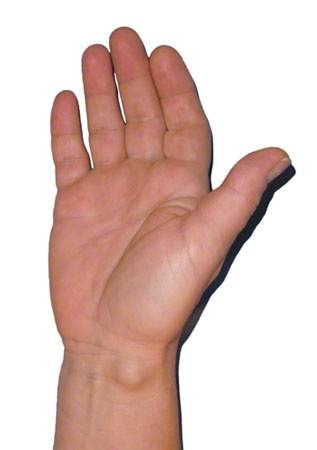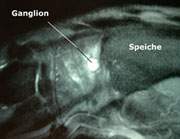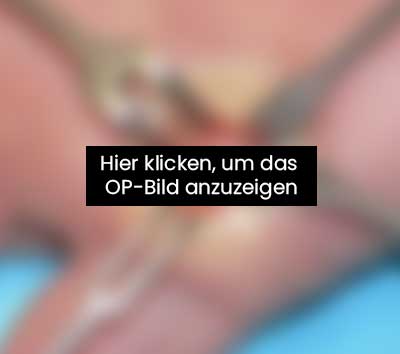The ganglioncommonly known as a ganglion, is a cyst-shaped tumor. It occurs very frequently on the hand and can also be found on the foot.
The overbone is benign and has a close anatomical relationship to the synovium, can appear as a protrusion of the joint capsule or as a blister-like distension of the tendon sheath.
Rarely, a ganglion can also have its origin in the bone and then causes increased pain.
However, the actual cause that leads to the formation of the ganglion is not known.
It is more common on the wrist extensor side.
Here, the joint capsule is exposed to greater strain due to increased stretching during flexion.
Since there are numerous other tumors (gout, rheumatoid nodules, lipomas, malignant tumors, …) on the hand, our plastic surgeons in Düsseldorf recommend an examination by a hand surgeon.
Contents
Yuveo Clinic
Special features of the ganglion
A ganglion often causes no symptoms. If pain and impaired movement occur, surgery or a puncture can help.
Causes of the overleg
Occurring complaints
Puncture
Ganglion surgery in Düsseldorf
If pain occurs, our team of hand surgeons will take an X-ray in advance.
For smaller findings, we can perform the operation under local anesthesia; it is harmless. Larger ganglions, on the other hand, must be operated on under iv. Regional anesthesia (arm anesthesia) or even general anesthesia.
During the procedure, it is important that we dissect the superficial bone so that the pedicle is visible. This represents a connection to the joint.
The accumulating synovial fluid (synovia) enters the superficial leg via this duct.
During the operation, we have to stably stop the ganglion stalk and suture it so that the synovial fluid / synovial fluid does not leak out again.
To prevent a relapse after an operation, our team of hand surgeons in Düsseldorf recommends immobilization with a plaster splint until the wound has healed.

Frequently asked questions about ganglion treatment
What complaints can be associated with the ganglion?
Initially a swelling, a small “lump”, is visible, the size of which can change.
Movement pain, which is occasionally accompanied by restricted movement, is not always present.
If the ganglion is localized near a nerve, sensory disturbances may occur. This also sometimes occurs without direct reference to the ganglion due to soft tissue displacement.
In most cases, however, there are no complaints.
How is the treatment carried out at the Yuveo Clinic?
The ganglion is harmless. If it has only been present for around 3 months and without symptoms, hand surgeons can initially wait and see.
We only perform surgery at our clinic in Düsseldorf if there is discomfort or significant cosmetic impairment.
In relation to a puncture (fluid is withdrawn), the probability of recurrence is over 50%.
In the case of a small overbone, our specialists in hand surgery can nevertheless make an attempt to suppress the formation of synovial fluid by means of a puncture and, if necessary, subsequent injection of anti-inflammatory medication.
What is an occult ganglion?
A ganglion that is invisible to the hand surgeon without further diagnostics is referred to as occult.
The initial focus is on the pain in the wrist, which is treated with prolonged immobilization, medication and other measures – but without success.
Only an MRI (magnetic resonance tomography), which shows the soft tissue well, then brings the overbone to light.
This can sometimes only be the size of a pea or lentil, but is the cause of the pain. If wrist pain persists over a long period of time, a ganglion should also be considered.

The MRI was performed because of chronic wrist pain.
Fact check on the operation
- Practitioners: Dr. Schumann and Dr. Schumann-Averkiou
- Anesthesia:
local anesthesia, regional anesthesia of the arm, general anesthesia if necessary - Hospitalization:
outpatient - Follow-up treatment:
Plaster splint until wound healing is complete
Related topics and further information




